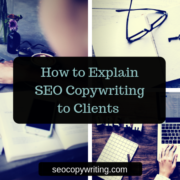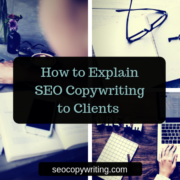How Do Readers Consume Your Content?
You are an SEO copywriter. As a matter of fact, you are a pro who makes a living doing just that – writing for websites. You write great content that aims to convert visitors. You know all about keyword research and call to action. You figured out who your audience is and did persona modeling. You know your way around analytics.
What you also know oh so well is how hard it is to convert a website visitor. User intent is often a mystery when you look at a search query.
Usability SEO tips can help optimize your pages. Still, your job is to grab the user with your content, get them interested, convince them to sign up or buy, and, finally, spread the word about your fabulous company.
Get ready for some tricks and tips on how to make your copy revenue-generating. The fascinating psychology of user behavior (combined with PPC testing) will make you a mind-reader. Well, not exactly, but close enough to get you a raise as the best converting copywriter.
Know Your Audience
When you are writing a post you have the audience in mind. Is it a “Methodical” engineer? Or a “Humanistic” activist, passionate about a cause? Could it be a “Spontaneous” visitor who wants to learn a new skill? Or, possibly, an information-hungry “Competitive” blog scanner?
These user behaviors were observed and described by Jakob Nielsen in one of his eye tracking studies. The study did not address web copy specifically. However, we can learn quite a lot from it.
User behavior on your page is relevant to how users will consume your content. Jakob Nielsen outlines 4 types of behavior:
- Competitive (type A)
- Methodical (type B)
- Spontaneous (type C)
- Humanistic (type D)
If you keep them in mind when writing your copy, your content will be sticky and appealing.
Your audience will consume your content as follows:
- Competitive browsers will quickly look at the header, note the highlighted content, scan the bullet points, and gloss over the menu. They will quickly make a decision about your page and their next action.
- Methodical users will use similar logical approach to your content. They will scan the page but more carefully, reading not only highlighted portions, but the text around them. They will study the menu and possibly links to learn more on the subject. They will pay attention to details.
- Spontaneous visitors suffer from copy ADHD. They will look at everything quickly, focusing on nothing, looking for something they can do on the page. If they see anything interactive, they will want to check it out. That includes sharing, comments, voting, ranking, polls, etc. They will be attracted to pictures and video, pretty buttons and fancy design.
- Humanistic types will look for anything in the content that relates to them. They will also be drawn to the pictures and design, but will spend more time examining it than a Spontaneous user. They will share your content with their friends only if it resonates with their beliefs and emotions.
All these types of visitors respond to different types of content. Obviously, you cannot create a separate page for each of them, but you can format the content based on your audience. The trick is to figure out whom your content appeals to best.
Plot your content on page
Your keyword research and the main topic should indicate to some extent, what kind of user would be most interested in your content. If it is a piece about green technology, for example, your Humanistic types would be your primary target. If you are writing about gadgets, I would focus on Competitive and Methodical types.
Put your main point in the first paragraph for the Competitive user. Make sure your call to action, sharing buttons, subscription offers are above the fold. Use bold and italic fonts to make your copy scannable. Make sure they know quickly what the next step is, i.e. call to action.
Elaborate on the main points for the Methodical visitor. Add references and links to other relevant articles. Comparisons, reviews, opinions, tools will keep a Methodical visitor on your page longer. They might even subscribe to your newsletter.
Select a cute and fitting image for your content to attract the Spontaneous visitor. Have sharing and “like” buttons easily available. A Facebook widget showing their friends liking the site will definitely help convert this type of visitor. If you can include some kind of calculator or poll – do it. Make your content more interactive and you will make a Spontaneous visitor stick.
Include some benefits or emotional points for the Humanistic type. Perhaps, include Facebook comments feed or Twitter feed if at all appropriate. Reviews and endorsements will convince a Humanistic visitor to take the action that other people like them took. “Sign this petition” or “Vote against this” calls to action will work well.
About the Author – Lyena Solomon
Lyena has 15 year experience in SEO, analytics, website usability and navigation. Her consulting company, NetSprinter, LLC, works with local and global businesses to craft marketing strategies that improve the revenue.




Leave a Reply
Want to join the discussion?Feel free to contribute!